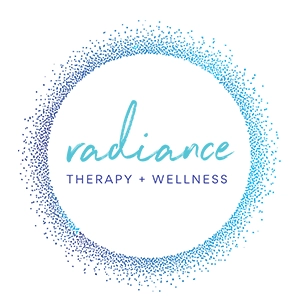There are more times in my life than I can count when I experienced physical pain relief after having a good cry.
The area in my body of subtle, intermittent, chronic pain is in the left side of my neck. I can trace the origin of when that pain started to just weeks after an enormous trauma at age twelve. Since that time, when I am under stress, out of alignment with my body’s rhythm, or have unprocessed emotions, that left side neck often sends me a ping of pain. And almost without fail, if I give myself time and space to feel into the emotional layer and cry, the pain almost completely dissipates. Now, there is also a structural, physical component too, because naturally my body has (and all of our bodies do) set up movement and tension patterning in response to present emotional stressors or triggers which in turn creates tension in the physical tissue and adhesions in the fascia.
Therefore, determining the cause of both emotional and physical tensions in the system are important when healing chronic pain. Myofascial release, the primary modality I use in my work with clients, addresses both of these layers because…
…physical and emotional pain are intimately linked.
Often when we resolve connective and soft tissue adhesions, it helps the emotional pain to become un-corked. When that happens, emotions will arise naturally during a myofascial release treatment as the tissue adhesions are softening. It is important to allow and be with these emotions as they come up; even if you don’t know where the emotions are coming from. By addressing the physical tissue, emotional processing can occur.
Pain often starts when you experience trauma.
These traumas can be a number of experiences, such as: being in a car accident, experiencing emotional abuse, witnessing violence, losing a loved one, going to a hospital for surgery, etc. As a result of the trauma, your nervous system goes into survival mode. Later, when experiences trigger the original trauma, your body returns to this mode and stress hormones are again released. This negatively impacts your immune system and prevents integration and healing. If your body is constantly cycling in and out of this distress, physical symptoms can manifest.
Pain itself becomes traumatic.
Peter Levine, a leading voice in the field of trauma and the developer of Somatic Experiencing, speaks of chronic pain itself as being a traumatic experience. Here is what he said in an interview with Tami Simon: “we look at chronic pain from the standpoint of trauma because… we have found that when people are not responding to the usual treatments, it’s almost always because they have some type of unresolved trauma that is being held in the body. And so the key… is to help identify the source of trauma, to help them find ways to release it for themselves that are safe… and helps them to expand their body experience.”
Levine goes on to further explain the process of how trauma gets perpetually stuck in the body and how that pain and trauma can resolve…
“The body becomes locked… to protect itself from an external threat, from an emotional conflict… Then that tension that gets locked in our body actually generates the pain, and then the pain generates further bracing because we brace against the pain. And that bracing causes further pain, further trauma, more pain. So it’s a feedback loop. You could say it’s a positive feedback loop with negative consequences. So that trauma leads to pain, the pain leads to trauma, pain leads to fear, and fear leads to more bracing, which leads to more trauma.
The key is in breaking this cycle whenever we can, so even if something has been chronic for years and it comes from very early trauma, still… people learn to touch into these sensations, to touch into these feelings and befriend them, really, not to suppress them, not to be overwhelmed with them, not to mindlessly express it, but to touch them, to become more in tune with our natural instincts.”
I think the last part of what Levine says is the real gem: that pain is to be contacted, attended to, and befriended… because when we do so, the healing can begin. When we feel safe enough to “go there” with our emotions, the natural process of resolution can occur.
Honoring where you are.
Lastly, I want to mention that although emotions are often a part of the process when healing chronic pain, every person’s journey is different and moves along on a unique timeline. It is important to remember this because healing takes time, it can’t be forced and the number one priority is to honor exactly where you are, to move at your own pace, and to allow the body to guide the journey… when you and your body feel safe, healing can unfold.
I would be delighted to hear your thoughts, your stories of healing, and any questions you might have!
Leave a comment or send me an email, I would love to hear from you. In the meantime I wish you all the best on your journey.
Image credit: Annie Spratt

